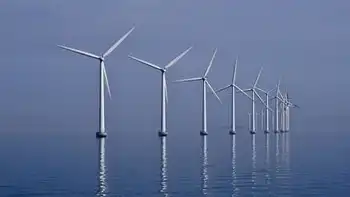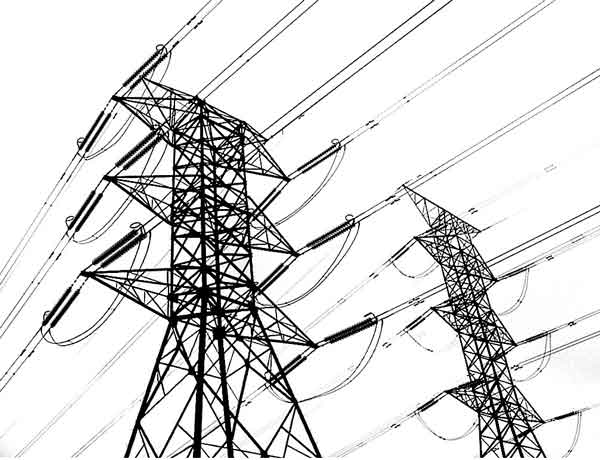Wind farms hit opposition: Foes target clearing of forests
By Knight Ridder Tribune
Arc Flash Training CSA Z462 - Electrical Safety Essentials
Our customized live online or in‑person group training can be delivered to your staff at your location.

- Live Online
- 6 hours Instructor-led
- Group Training Available
With a pair of public hearings scheduled this week, Garrett's Chamber of Commerce, Board of Realtors, Democratic Central Committee and Republican state delegate and senator have come out against the proposal to use two state forests in the county for wind farms. So has the mayor of the town of Oakland.
"I've taken time to talk to a lot of people, and a vast majority are against this," said state Sen. George C. Edwards, a Republican who heads the delegation from Garrett and Allegany counties. He sent a letter to Gov. Martin O'Malley asking him not to a low state land to be used for wind farms.
"Even people who support windmills don't support them on state land," Edwards said.
Charlie Ross, president of the Garrett County Chamber of Commerce, agreed. "There is an aesthetics issue. And people who come to Garrett County to live or visit want to see that aesthetics preserved," he said. "Since tourism is our biggest industry going right now, we don't want to do anything to harm that industry."
But David F. McAnally, chairman of Pennsylvania-based U.S. Wind Force, said he believes people will support his company's proposal to build a total of 100 turbines on two state forest tracts once they hear all the facts.
McAnally said it's worth using a fraction of 1 percent of the public land in Western Maryland to increase the supply of clean electricity to the state, which faces a power shortage in future years. "We will reach a time when we will not be able to tell our kids or grandkids that they can turn on the light when they flick the switch," McAnally said. "Wind power is a part of that solution."
U.S. Wind Force is running ads in Western Maryland newspapers that say "Support Wind - for a Cleaner Energy Future." The company notes that Maryland has long allowed lumber companies to cut trees in state forests for timber.
Some power line towers are allowed in state forests.
Author and climate change activist Mike Tidwell, who supports wind energy as a way to fight global warming, said he thinks Maryland should ban logging in state forests if it's going to prohibit wind farms. He said logging is more environmentally harmful than wind turbines.
"I appeal to the governor to make a fair and balanced decision that does not favor one industry that has obvious harmful impacts versus a new industry that brings clear benefits to the state, while being admittedly imperfect," Tidwell said. About 25,000 wind turbines across the country generate about 1 percent of America's electricity, with more than 3,000 built in the past year.
Boosted by federal subsidies, scores of turbines are being built in the Midwest, Texas, California, Pennsylvani and West Virginia. But none has been built in Maryland.
Maryland has given full or preliminary approval to three companies to create wind farms on private land in the western part of the state, but the projects have been slowed by a lack of agreements with power distribution companies and other problems. U.S. Wind Force is looking at the Savage River and Potomac state forests. The American Wind Energy Association says it does not know of any wind turbines built in state or federal forests anywhere in the United States.
U.S. Wind Force officials rode in a state helicopter with O'Malley this fall to look at Western Maryland, McAnally said. They showed the governor the 400 acres they're interested in along Backbone Mountain and Meadow Mountain. Casper R. Taylor Jr., the former speaker of the House of Delegates from Western Maryland, has been lobbying state officials on the company's behalf.
The terms of the leases would have to be negotiated, but they could include payments to the state of roughly $1 million a year for 20 years, according to state and company officials. But before the O'Malley administration considers the company's proposal, the Maryland Department of Natural Resources must set a general policy on whether to allow wind turbines on state land, said Deputy Secretary Eric Schwaab.
"We are focused on the public policy question of whether it's appropriate to use state forests to satisfy our goal of increasing the production of sustainable energy," Schwaab said.
Electricity transmission towers in state forests can be 100 feet tall, about a quarter the height of the proposed turbines. Part of the Savage River forest is used by natural gas companies for the underground storage of methane, a use inherited when the state received the land from the federal government in the 1950s, Schwaab said. Over the past two decades, the state has turned down all requests for natural gas wells in state forests.
Each acre in Savage River State Forest is logged about once every 120 years, Schwaab said. Last year, trees were cut from about 245 of the forest's 55,000 acres.
"It's not clear-cut," he said. "We do harvest timber on a sustainable basis."
U.S. Wind Force officials have said that they'd have to clear up to 400 acres of state forest for their turbines. The Natural Resources Department had received more than 300 e-mails from the public about the proposal, and about 80 percent of the messages opposed the idea, according to the agency.
"NO! We should not be industrializing our state forests!" read one typical comment, from a woman identified on the agency's Web site only as Barbara D. Garrett County has received more than 100 e-mail messages, phone calls and letters about the proposal, about 95 percent of them against the idea, county officials said.
The Garrett County Chamber of Commerce, Board of Realtors and County Democratic Central Committee all voted unanimously this month against allowing the wind farms on state land. The Board of Realtors sent a letter to the governor reading: "There should be no wind power turbines placed on Maryland's public lands, especially those lands in our treasured state parks, forests and wildlife areas."
Among those supporting the proposal is state Del. Robert A. McKee, a Republican from Washington County, more than an hour's drive to the east. He wrote the governor praising the project as something that would "help the region meet expected future power demands with a safe, clean, renewable, reliable, domestic source of power."
But in Garrett County, where the turbines would stand, "the consensus seems to be overwhelmingly opposed to it," said county Commissioner Ernest J. Gregg, a Republican.
"The public seems to think it will disturb their views and disturb the recreational se of public lands."











